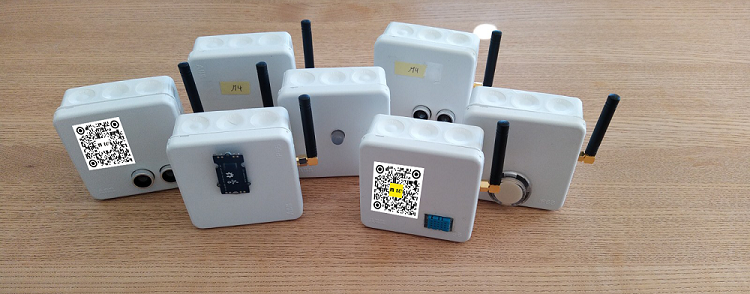
"FHNW IoT Bricks" are designed to simplify the prototyping of IoT use cases, especially for long-range and large-area applications. Sensors with LoRaWAN connectivity are distributed in a room, building or city district. A simple Java SDK allows data to be read out and integrated into any program. The SDK should install with minimal dependencies on a desktop computer or Raspberry Pi "server". From the user's point of view the sensor devices are ready-made building blocks that are automatically connected wherever a LoRaWAN infrastructure is available. For use in education and field tests, the battery life should therefore be at least one semester.)
Java, Arduino, LoRaWAN
The overall objectives of the project are as follows: - Energy-saving FHNW IoT Brick - Fimware template for fast prototyping of IoT bricks - FHNW IoT Brick automatically connects to the backend - The ClientSDK is used to read data from or send data to the backend - ClientSDK is suitable for further education and training
The implemented solution of the project team fulfills in the current version almost all goals and general conditions of the project. Thus, it is already possible to create a new FHNW-IoT-Brick with our template in a short time and to successfully send and receive data to and from the backend. The Java application developed by us can also read the data from the TTN backend and provide new data to the backend. The simple structure of the Java application makes it possible to use it for education and training, and it can be adapted relatively easily to new requirements. Only the goal with the power-saving FHNW-IoT-Brick could not be realized satisfactorily. According to our measurements, depending on the sensor used, only a battery life of up to 60 days can be achieved.
In order to achieve the goal of the long duration nevertheless, the project team has evaluated several options that can be linked to the existing project: - Installation of a TPL5110 - Nano Power System Timer in each FHNW-IoT brick - Hardware Modifications to existing hardware
The recommendation of the project team is that the next step is to install a TPL5110 in each FHNW-IoT brick and also to make adjustments to the template to support the TPL5110. Based on the specifications of the TPL5110, the project believes that with this adaptation the desired runtime of the sensors can be achieved.
Barbara Scheuner, +41 56 202 77 27, barbara.scheuner@fhnw.ch www.fhnw.ch
David Meier, David Roth
Prof. Thomas Amberg, thomas.amberg@fhnw.ch, University of Applied Sciences and Arts
